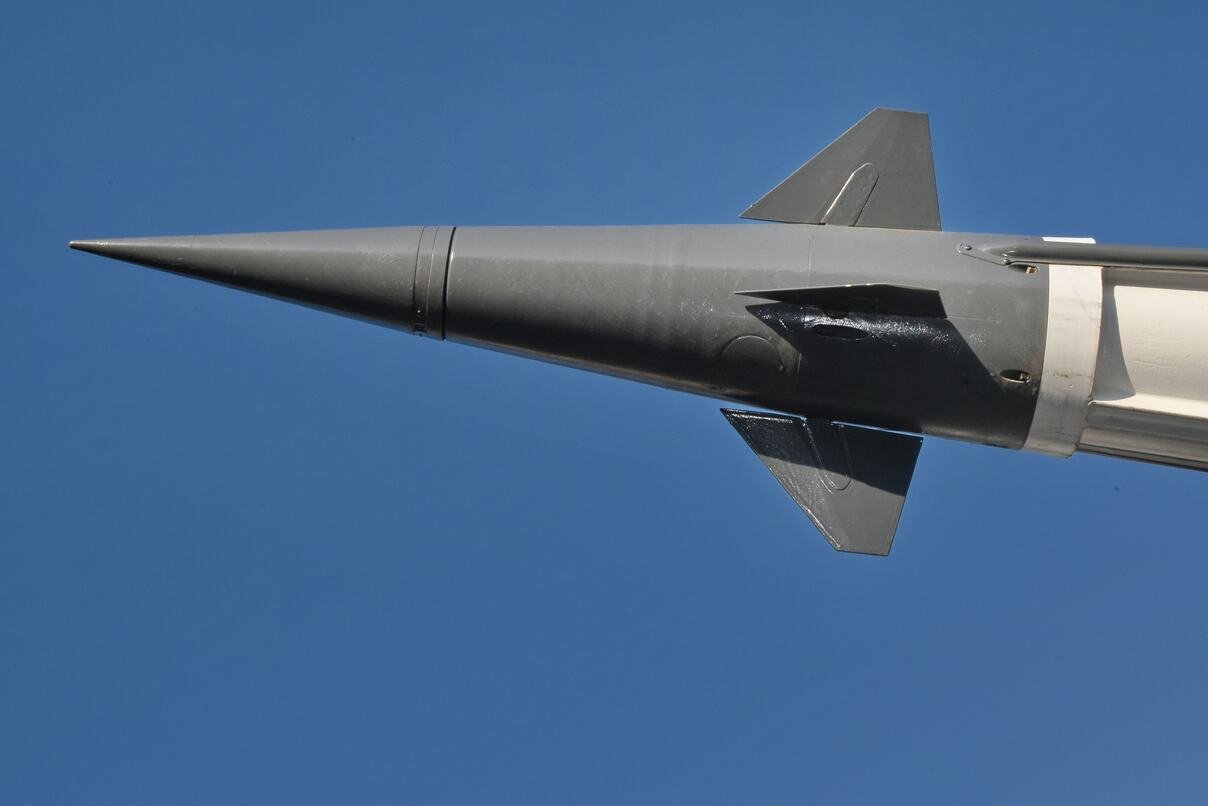Hypersonic Missile
War in Ukraine: What you need to know about Russian hypersonic missile…
Russia says it fired a hypersonic ‘Kinjal’ missile to destroy an underground arsenal in western Ukraine. The use of this new weapon during the conflict was a world first.
Faced with slow progress in Ukraine, Russia is gradually increasing its firepower. The hypersonic missile “Kinjal” was reportedly used on Friday, March 18, 2022 to destroy an underground armory in western Ukraine, a spokesman for the Russian Ministry of Defense announced on Saturday morning March 19, 2022.
Its use in Ukraine is a world first for hypersonic weaponry, experts say. Here’s what you need to know about the type of missile that Western nations fear.
What is this Kinjal missile?
The hypersonic “Kinjal” ballistic missile, like the cruise missile “Zirkon”, belongs to a new family of weapons developed by Russia and which Vladimir Putin describes as “invincible”. Highly maneuverable, this type of missile opposes all air defense systems, according to Moscow.
The machine, which weighs 4 tons and is about 7.4 meters long, can fly at a speed of more than 10,000 kilometers per hour, and hit targets within a radius of 2,000 kilometers. Given these characteristics, only the Mig-31 fighter jet and the large TU-M22 bomber are capable of carrying such missiles.
Successfully tested in 2018, the Kinjal (“dagger” in Russian), during testing, have hit all their targets at a distance of up to more than 1,000 km, according to the Russian Ministry of Defense. In a video posted on YouTube by the ministry, two pilots show the plane rooted under a MiG-31, as Russian warplanes take off and land, against the backdrop of war music.
Why is this hypersonic missile so dangerous?
If they’re considered formidable by Western nations, it’s not because of their speed – no bigger than an intercontinental ballistic missile, for example – but because of their ability to change course at any moment. Deviating from a predictable trajectory thus rendering the enemy’s anti-missile defense ineffective.
Initially, these weapons were designed to evade the most complex defense systems, such as the American missile shield in Europe. The test in 2018 did not go unnoticed at NATO. “Russia’s new hypersonic missiles are potentially destabilizing and pose a significant risk” because they can carry nuclear warheads, Pentagon spokesman John Kirby reacted. A NATO official for his part denounced the missile as “creating an increased risk of escalation and miscalculation”, ensuring that the Atlantic Alliance “will not reproduce what Russia is doing”.
What’s more, Friday’s hit target, a cellar, seems ideal for the Kinjal family. “Such infrastructure is difficult to destroy with conventional missiles. Hypersonic missiles have a greater penetrating capacity and destructive power due to their extremely high speed,” notes Vasily Kashin, military analyst and director of the research center at the Moscow Higher School of Economics.
Sources: PinterPandai, Sipri, Aljazeera, BBC
Photo credit (for ilustration): Pixnio



